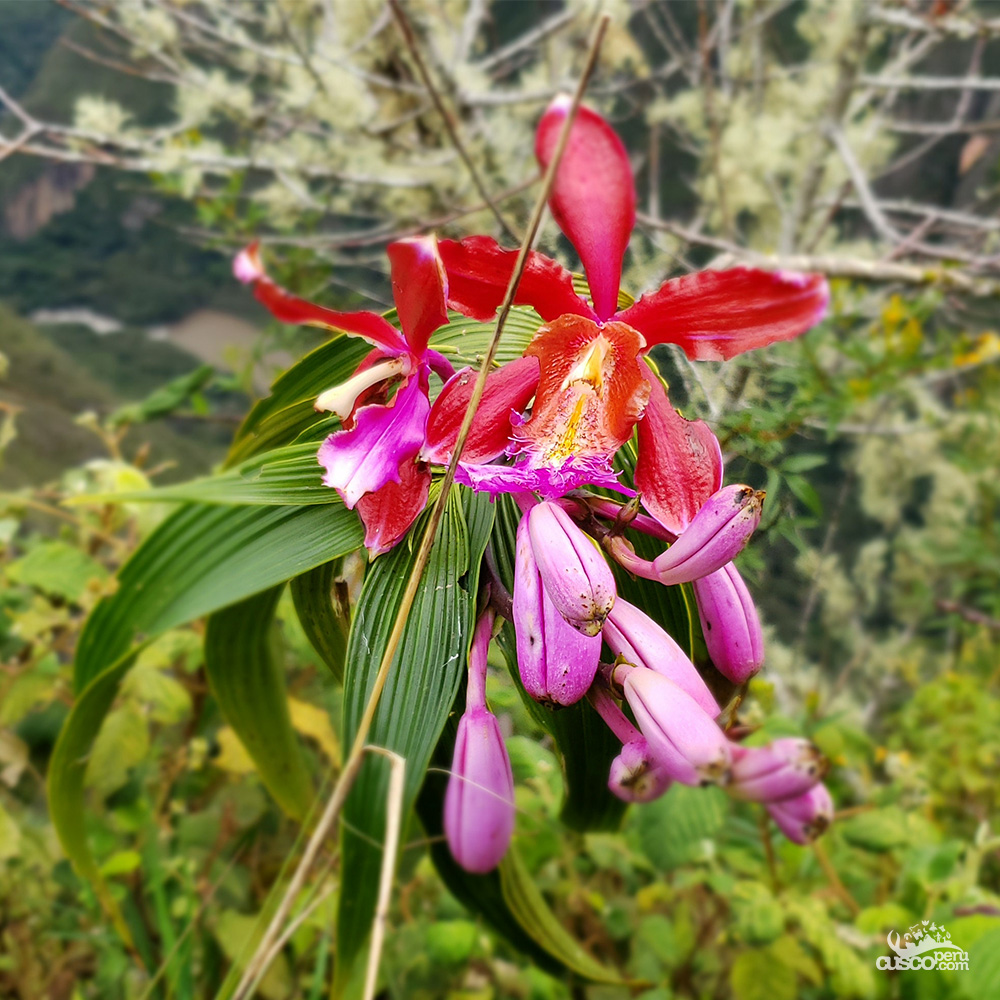

Machu Picchu is a must-visit for anyone arriving in Cusco. However, it is not just its rich cultural heritage that makes it attractive, but also its impressive biodiversity.
The flora and fauna found in the Historic Sanctuary of Machu Picchu have become another spectacular attraction for all tourists.
The citadel of Machu Picchu covers an area of more than 32,592 hectares, where the Andes Mountains and the tropical jungle converge. With an altitude ranging between 2,000 m and 6,000 m, it facilitates the creation of microclimates, making its grand biodiversity possible.
The biodiversity present in Machu Picchu is of global importance, as its conservation involves protecting various habitats, each with an immense variety of flora and fauna species.
The conservation area of the Historic Sanctuary of Machu Picchu holds an immense amount of biodiversity. It houses approximately 20% of Peru's total flora and 12% of the national fauna.
This remarkable diversity makes Machu Picchu an ecosystem of vital importance for the study and conservation of Peruvian biodiversity.
The diversity of flora present in the citadel of Machu Picchu includes almost 3,400 different species, approximately 20% of those present throughout the national territory, reaffirming the importance of this protected area.
Among the most notable flora species are orchids, carnations, ferns, puyas, angel trumpets, molles, cedars, queñuales, among others.
Orchids (Orchidaceae) are plants that stand out for their extraordinary beauty, colors, and fragrances, making them the main attraction in terms of flora.
Approximately 400 species of orchids have been found within the Historic Sanctuary of Machu Picchu, and it is believed that there are still undiscovered species.
The destruction of their habitat, caused by forest fires and indiscriminate extraction by illegal traders, has led to a significant decrease in the number of species.
Machu Picchu hosts a wide variety of trees and shrubs that contribute to the biodiversity and ecological balance of the region. Among the abundant vegetation, the following stand out:


The richness of fauna in the citadel of Machu Picchu is impressive, with more than 582 species of animals, mostly endemic. Among these, nearly 300 species of butterflies can only be found in the Historic Sanctuary of Machu Picchu.
Among the most emblematic fauna species are the spectacled bear, the Andean cock-of-the-rock, various species of hummingbirds, the puma, the Andean fox, the taruca, and a wide variety of reptiles and amphibians.
The spectacled bear (Tremarctos ornatus) or Ukumari is one of the most representative animals of the area. It has black fur with markings around its eyes that look like glasses (hence its name).
It inhabits the dense forests of the Inca citadel. It has a pollinating function within the ecosystem; its diet is based on fruits and leaves. They measure approximately 1.80 m tall and weigh between 100 and 175 kg.
Rodents play a very important role in the biodiversity of Machu Picchu. Some of the most notable rodents are:
The Andean cock-of-the-rock (Rupicola peruvianus) is the national bird of Peru and is emblematic of Machu Picchu. The plumage of the males, with intense red and orange colors, contrasts with the lush green of the cloud forests, enhancing their beauty.
This bird feeds on fruits and seeds and lives in small groups of no more than 20 individuals, fulfilling a seed-dispersing function.
Among the diversity of birds found in the Sanctuary of Machu Picchu, a wide variety of hummingbirds can be observed. During a visit to the citadel, several birds can be seen flying among the vegetation, displaying an impressive array of colors.
These small birds have a vital pollinating function in maintaining biodiversity by transporting pollen and ensuring the reproduction of many native plants.
Machu Picchu is one of the places with the greatest variety of butterflies, enriching the biodiversity of the sanctuary. More than 400 species have been identified only in the Sanctuary of Machu Picchu.
Each of them contributes to pollination and maintaining local flora, which gives them greater importance.


The Historic Sanctuary of Machu Picchu houses a great amount of biodiversity, among which are several endangered species that require urgent conservation actions. The most notable among them are:
These species are not only vital for the ecological balance of Machu Picchu but also form part of Peru's rich natural heritage. Their protection is of utmost importance, not only to preserve the beauty of Machu Picchu but also to maintain the ecosystem.



Happy passengers